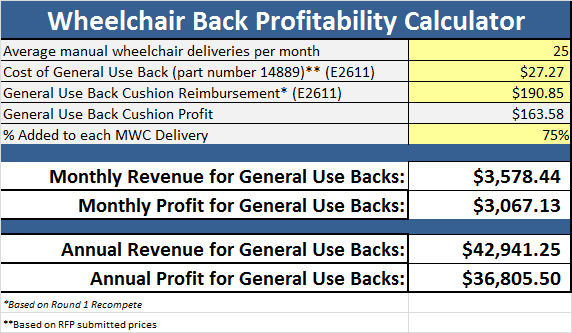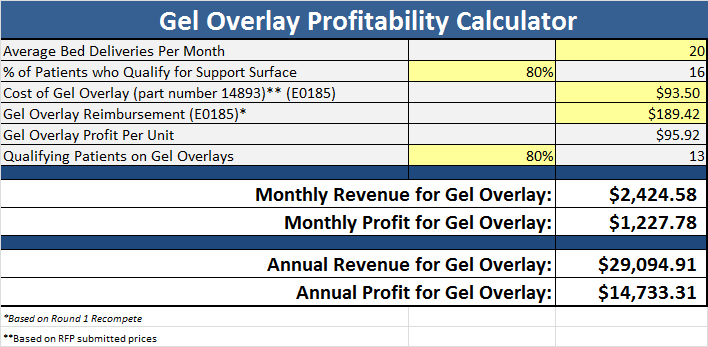LEARN HOW MUCH YOUR COMPANY COULD PROFIT FROM UPCARING WHEELCHAIR AND HOSPITAL BED ACCESSORIES
See our sample calculators, and contact us for a custom analysis.
In the midst of a slow economy, declining reimbursement, audit pressures and competitive bidding, HME providers are taking every opportunity to reduce operational costs. The act of reducing costs can be painful. Some providers do this by closing branches, cutting staff and even reducing their vehicle fleet and deliveries just to make ends meet. Sometimes those things are just unavoidable. However, one important aspect that’s often missed is capitalizing on the cross-selling opportunities of everyday referrals to make more profit.
Every provider’s goal is to provide efficient and effective patient care, education and service. Upcaring with wheelchair accessories can help to increase patient comfort and safety, and improve their quality of life, but it can also make wheelchair sales profitable in the first month for the provider.
How Upcaring Wheelchair and Hospital Bed Accessories Can Increase Operational Efficiency
Upcaring wheelchair and hospital bed accessories can have a positive impact on increasing operational efficiency.
How to Implement a Wheelchair and Hospital Bed Upcaring Program
Learn the steps to successfully implementing an upcaring program.
How to Remain Profitable in the Face of Competitive Bidding
Let us show you how to optimize profitability on your wheelchair and hospital bed referrals.
Could an Upcaring Program Increase Your Wheelchair and Hospital Bed Profits?
Let us show you how an upcaring program can make your wheelchair and hospital bed sales profitable in the first months.
For instance, let’s say a provider averages 25 manual wheelchair deliveries per month. The cost of a general use back cushion (E2611) is $27.27, while the reimbursement for that item is $190.85 – a profit of $163.58 per back cushion. If 100% of the wheelchair patients qualify for the general use back cushion, that’s $3,067.13 in monthly profit. When added up over the long term, the provider can expect an annual profit of $36,805.50 for general use back cushions alone.
The same can be applied for the general use seat cushion (E2601). The cost is $18.14, while the reimbursement for that item is $39.81. That’s a profit of $21.67 per cushion. If 100% of the wheelchair patients qualify for the cushion, that’s $541.75 in monthly profit. Added together, it’s an annual profit of $6,501.
In addition, for hospital beds, let’s say a provider averages 20 hospital bed deliveries per month. On average, 80% of those patients (16 patients) will qualify for and benefit from a Group 1 support surface such as a Gel Overlay. If the provider can issue just 80% of these patients with a Gel Overlay, that is 13 orders per month. The cost of a gel overlay (E0185) is $93.50, while the reimbursement for that item is $189.42 (Round 1 re-bid rate, other areas much higher) – a profit of $95.92 per Gel Overlay. For all 13 patients that qualify for a gel overlay, that’s $1,227.78 in monthly profit. When you add that up over the long term, it’s an annual profit of $14,733.31 for Gel Overlays alone.
Contact us today to schedule an appointment with your Territory Business Manager and one of our Strategic Growth Specialists to find out how much you could profit from upcaring.









